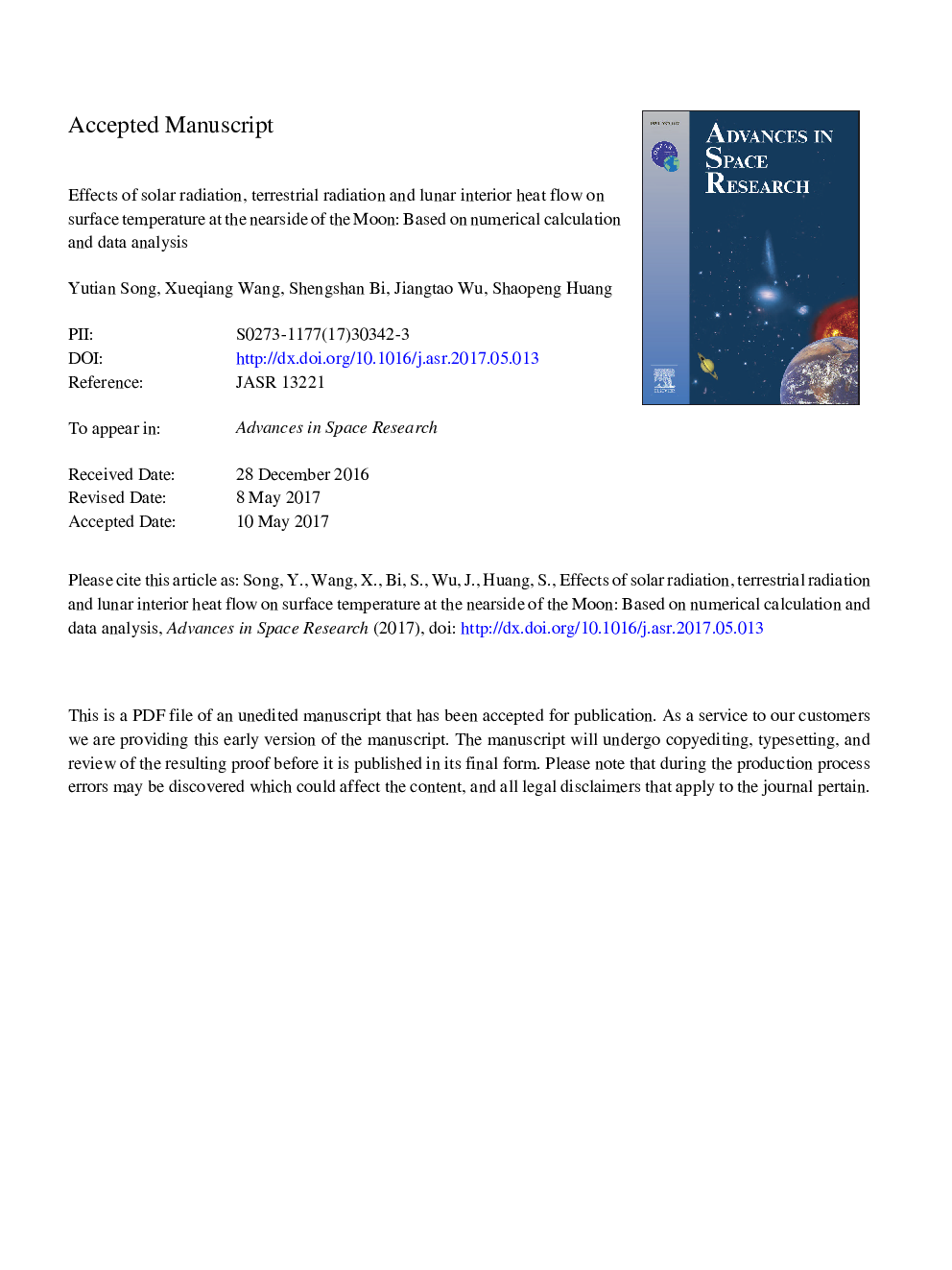| Article ID | Journal | Published Year | Pages | File Type |
|---|---|---|---|---|
| 5486132 | Advances in Space Research | 2017 | 16 Pages |
Abstract
Surface temperature at the nearside of the Moon (Ts,n) embraces an abundance of valuable information to be explored, and its measurement contributes to studying Earth's energy budget. On a basis of a one-dimensional unsteady heat-transfer model, this paper ran a quantitative calculation that how much the Ts,n varies with the changes of different heat sources, including solar radiation, terrestrial radiation, and lunar interior heat flow. The results reveal that solar radiation always has the most important influence on Ts,n not only during lunar daytime (by means of radiation balance) but also during lunar nighttime (by means of lunar regolith heat conduction). Besides, the effect of terrestrial radiation is also unavoidable, and measuring the variation of lunar nighttime low temperature is exactly helpful in observing Earth outgoing radiation. Accordingly, it is practical to establish a Moon-base observatory on the Moon. For verification, the Apollo 15 mission temperature data was used and analyzed as well. Moreover, other 9 typical lunar areas were selected and the simulation was run one after another in these areas after proper model amendation. It is shown that the polar regions on the Moon are the best areas for establishing Moon-base observatory.
Related Topics
Physical Sciences and Engineering
Earth and Planetary Sciences
Space and Planetary Science
Authors
Yutian Song, Xueqiang Wang, Shengshan Bi, Jiangtao Wu, Shaopeng Huang,
